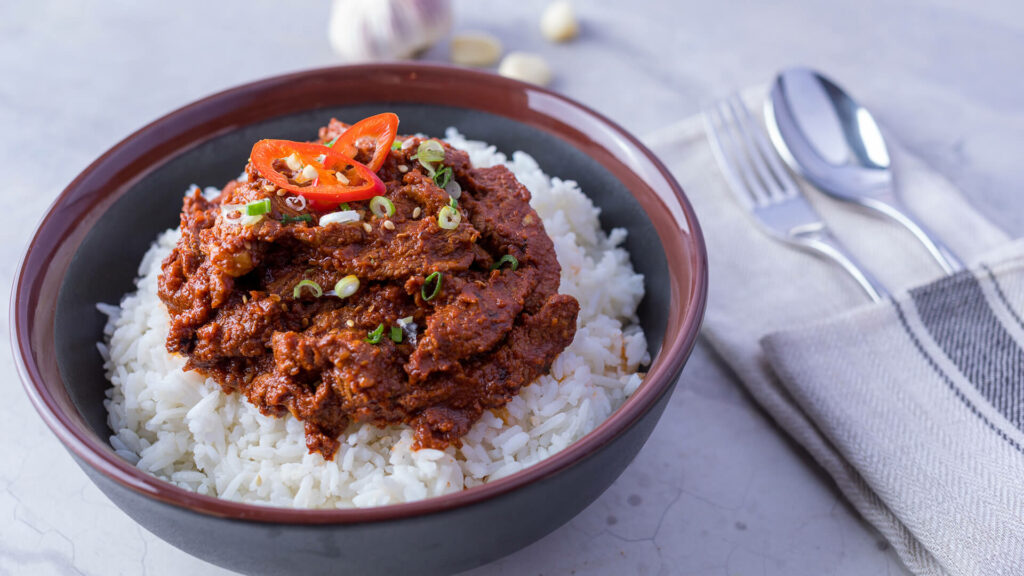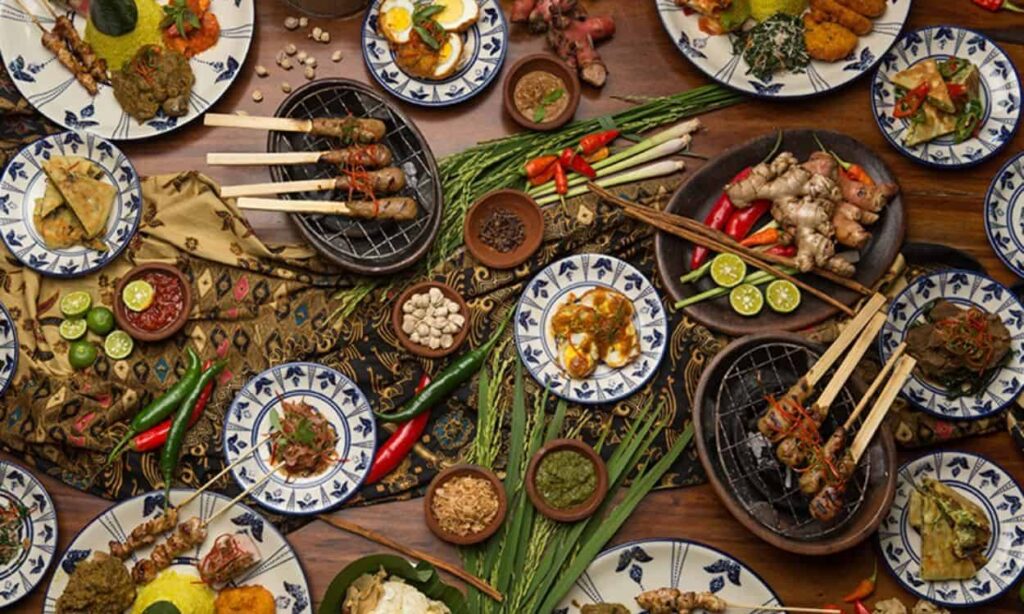Indonesia is one of the countries with an impressive and amazing culinary wealth. Several foods from Indonesia are included in CNN’s list of the 100 most delicious foods in the world. One of the reasons why food from Indonesia is so delicious and has so many variations is because food from Indonesia has an abundance of spices. So that not infrequently this creates a taste of food or cuisine that is difficult to find in other countries. One more thing that makes Indonesian specialties taste delicious and appetizing is that some of the existing foods have their own meaning and philosophy in them. Every meal is also made with feelings of love and happiness. This article will discuss some Indonesian dishes that are very famous in Indonesia and even in the world.

Rendang
is authentic Indonesian cuisine. This meat-based dish is popular in Indonesia and Southeast Asian countries such as Malaysia, Singapore, Brunei, the Philippines and Thailand. Not only in Southeast Asian countries, rendang is one of the foods that has been named a dish that was ranked first in the list of the World’s 50 Most Delicious Foods (50 Most Delicious Dishes in the World) version of CNN International in 2011. Based on its history and philosophy, the origin of rendang is food. originating from West Sumatra, precisely in the city of Minangkabau. For the Minang people, rendang has been around for a long time and has become a traditional dish served in various traditional events and daily dishes. Rendang cuisine has a philosophy which means deliberation for consensus. It is lifted from four main ingredients that symbolize the integrity of the Minang community. symbolically, “dagiang” (beef) symbolizes “ninik mamak” or with the meaning of traditional tribal leaders, “karambia” (coconut) symbolizes “cadiak clever” which means intellectuals, “lado” (chili) symbolizes “alim ilama” which means firmly to teach religious law, and “cook” (seasoning) symbolizes the entire Minangkabau community.
Rendang is divided into two types, namely dry rendang and wet rendang. Dry rendang is rendang that is cooked for hours until the coconut milk dries up and the spices are completely absorbed, dry rendang is usually darker in color and slightly blackish brown. While wet rendang or better known as kalio is rendang that is cooked in a shorter time and the coconut milk is not yet completely dry, wet rendang has a light golden brown color and is paler.
Rendang is generally made from beef, but rendang also has other variations such as chicken rendang, duck rendang (randang itiak), liver rendang, egg rendang (randang talua) which are typical Payakumbuh dishes where the dish resembles crackers made from chicken eggs. . In addition to egg rendang, Payakumbuh also has a special rendang, namely shredded rendang (randang runtiah) made from chicken or beef where the meat fibers are broken down into small pieces that resemble shredded meat. Pulmonary rendang, tuna rendang, clam rendang (randang lokan), anchovy rendang (randang maco), eel rendang, pensi rendang made from small freshwater clams are some other variations of rendang originating from various regions in West Sumatra. Rendang is a food that has a spicy, salty and savory taste in every bite.
Gado Gado
Gado-gado is a typical Indonesian dish originating from Jakarta where it is well known by the wider community. This dish is in the form of vegetables that are boiled and sprinkled with peanut sauce or peanut sauce that has been mashed then stirred evenly and sprinkled with fried onions and crackers on top. According to philosophy and history, this gado-gado food is a food made because the supply of food ingredients, especially rice, is running out. During the VOC era, the rice barns around Batavia (another name for Jakarta during the colonial period) were burned down so the soldiers who joined the war troops made chili sauce from peanuts and then sprinkled them on various raw vegetables around the rice fields to survive. This action in Javanese is called Gado which means eating only side dishes or eating side dishes without rice.
Vegetables that are often used in making this gado-gado are green vegetables such as lettuce, cabbage, cauliflower, beans, bean sprouts, bitter gourd, cucumber, sliced boiled potatoes. Gado-gado is a food that can be said to be a salad-like food. Currently, along with the development of the era, gado-gado now has other additional ingredients in the form of boiled eggs, tempeh, tofu, corn and other additional ingredients in the form of rice or rice cake. Gado-gado is a food that has the taste of the spices in the form of spicy, sweet, sour and salty flavors mixed into one.

Noodles.
Mie Indonesia or Mie Nusantara is a noodle dish that developed in Indonesian society where it is very diverse and rich in taste. Various regions in Indonesia have processed noodles into regional specialties that each have a unique and different taste.
In historical records, Indonesian people, especially in Java, are estimated to have consumed noodles since 1391. This is known by the inscription that mentions laksa which means one hundred thousand which is believed to refer to the number of vermicelli strands. The term laksa or lakhshah is also believed to have come from Persian or Hindi which refers to a type of vermicelli.
So many processed dishes made from noodles that are very famous in Indonesia including
Mie kocok, which comes from Bandung. This noodle uses thick beef broth and flat yellow noodles as its ingredients, served with sliced beef kikil, bean sprouts, meatballs, lime, celery and fried onions. These noodles are called shake noodles because of the cooking process, where the noodles are put into a long, hollow container and then put in hot water and then shaken or stirred until cooked.
Mie Aceh, as the name implies, noodles originating from Aceh are made of yellow noodles stir-fried with various spices. For the topping, add shrimp, squid and beef or crab meat. Usually as a complement to Mie Aceh, pickles, chips, fried onions and lime are also added. Mie aceh has a chewy texture taste and strong and fresh spices. Mie Aceh can be served fried or gravy.
Bakmi Jogja. Bakmi Jogja is usually served in three types, namely boiled, fried, nyemek which means the noodles are served wet but not until there is gravy in the presentation. The raw materials for making this food, apart from noodles, are chicken, cabbage, tomatoes, scallions, pickles and fried onions. For taste, noodle Jogja tends to be savory, sweet and the level of spiciness can be adjusted.
Soto Mie Bogor, as the name implies, this dish comes from the city of Bogor where this dish contains vermicelli noodles, tomato-tomato potatoes, carrot radish, fried risole slices, meat then doused or mixed with warm soto sauce. While the taste of this noodle soup tends to be fresh, salty and sour. As a complementary ingredient, soto mie is usually added with chips and fried onions along with green onions.
Thus some information about culinary foods in Indonesia. Of course, there are many more types of food available and it will definitely arouse your taste buds. So don’t forget to taste and enjoy the rich taste of this food when you come and visit Indonesia.





